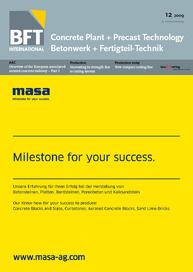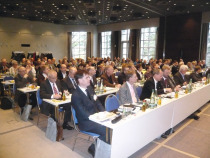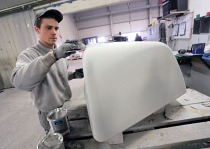Coal fly ash separation plants to be built
Apex Bulk Technologies, Inc. announces a multi-year agreement with Tribo Flow Separations, LLC of Lexington, Kentucky to design and build dry combustion fly ash separation plants in North America to recover saleable products for use in concrete. Dr. John Stencel of Tribo Flow Separations has performed extensive work on separating unburned carbon in the fly ash from coal fired electric utilities resulting in seven US and International patents.
Fly ash with high carbon or LOI (Loss on Ignition) content is usually sent to a landfill or an impoundment. As a consequence, any economic value that the fly ash has is lost and a long-term financial and environmental burden is taken on by the company owning the impoundment. Furthermore, over time the landfill will become completely filled with the fly ash and additional space will have to be engineered to accommodate continued disposal. Under certain circumstances ash impoundments have been known to rupture, potentially causing catastrophic damage to humans, plants and animals.
An ideal use of fly ash is to substitute it for Portland cement in the manufacture of concrete. The Federal Government and each State have specific guidelines on how much carbon is allowable in the fly ash when it is substituted for Portland cement. However, concrete manufacturing plants demand as little carbon as possible in the fly ash to reduce the amount of air entraining agent necessary to produce a quality product.
Therefore, a need exists for a plant that can separate the unburned carbon from the fly ash. Using TFS technology Apex Bulk Technologies has designed various size plants to solve customer problems.
The technology uses pneumatic conveying of the fly ash which carefully aligns the particles in a stream where an electrostatic field can separate the carbon particles from the mineral particles. Apex Bulk Technologies has designed the plant as a series of separation cells in modular form allowing a customer to start small and add capacity in modules as more ash product is sold into the market. Another advantage of the technology is that it has no moving parts that might cause a major breakdown. Each separator cell within a module can continue to operate if one of the separators were to be shut down for maintenance purposes.
The equipment used to convey the fly ash to the separation cells is off the shelf bulk material handling equipment commonly used in coal fired utilities. The process will be monitored and controlled by PLC’s and will be expected to be utilized 24 hours per day seven days per week.




